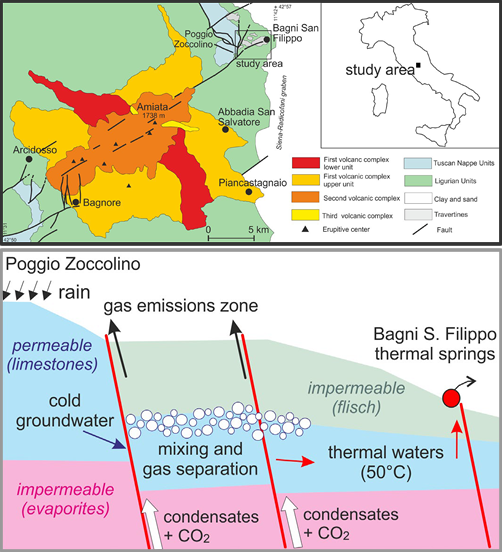The hydrothermal system of Bagni San Filippo (Italy): fluids circulation and CO2 degassing

Chiodini G., C. Cardellini, S. Caliro, R. Avino, M. Donnini, D. Granieri, N. Morgantini, D. Sorrenti & F. Frondini.
Italian Journal of Geosciences, 139, 383-397, https://doi.org/10.3301/IJG.2020.12
Abstract
Bagni San Filippo area is characterized by the discharge of thermal waters and deeply produced CO2-rich gases both from vents and soil diffuse degassing. The thermal waters are the results of the mixing between meteoric waters and hot fluids deriving from the condensation, at depth, of vapours uprising from a deep hydrothermal reservoir. This process gives rise to a relatively shallow thermal system at temperature close to 50°C, characterized by SO4-rich and Cl-poor waters and elevated PCO2 (~7 bar). Most of the incondensable gas of deep originated vapour is released as a free gas phase forming cold gas vents and localized spots of anomalous CO2 diffuse degassing. The location and the shape of these degassing zones are strongly controlled by the main tectonic structures of the area. Through detailed soil diffuse degassing surveys and hydrogeochemical modelling, we estimate at 226-326 t d-1 and at 965 t d-1 the deep CO2 emission and the amount of condensates discharged by the thermal springs, respectively. The thermal energy associated to the process results at ~ 29 MW, most of which (~ 25 MW) is associated with condensation occurring at depths greater than groundwater circulation.


Devi effettuare l'accesso per postare un commento.